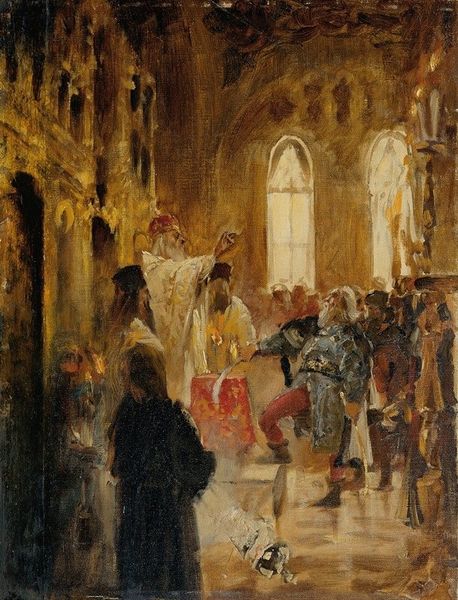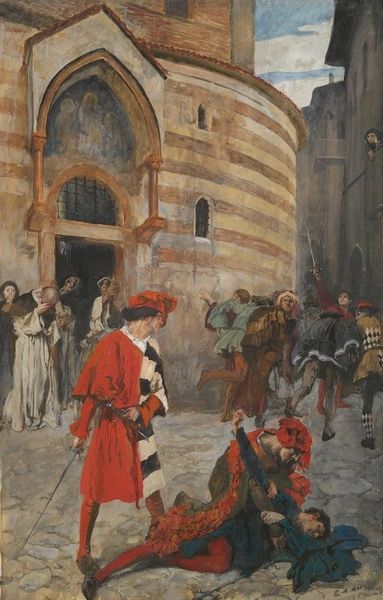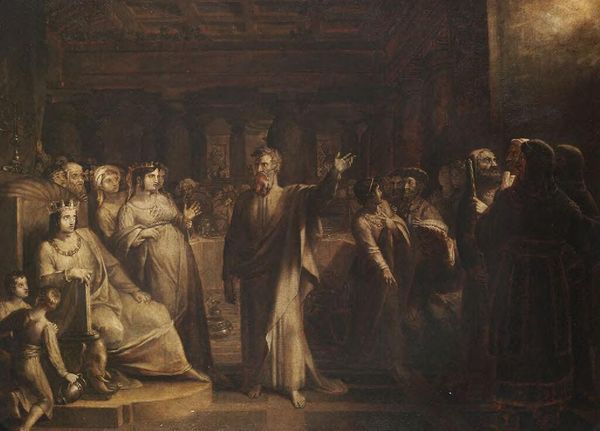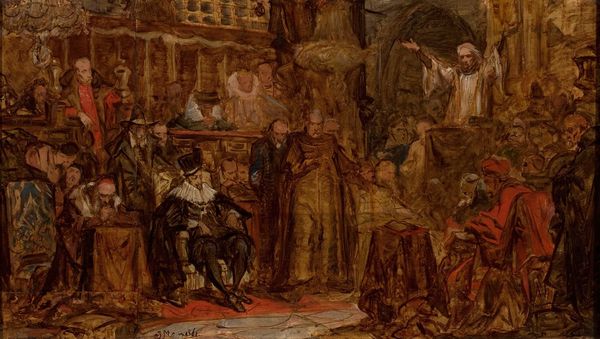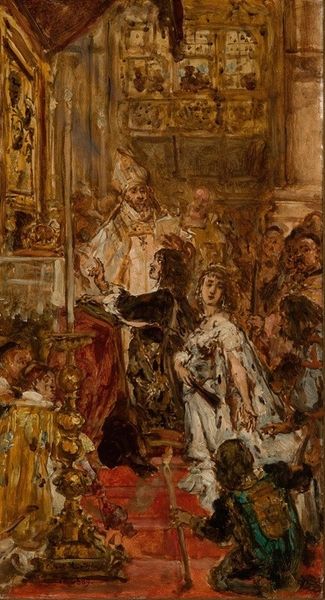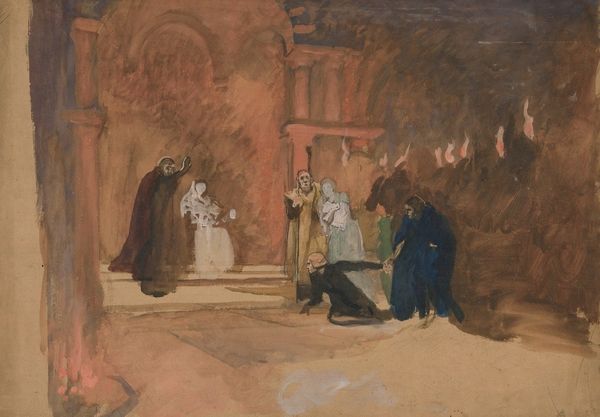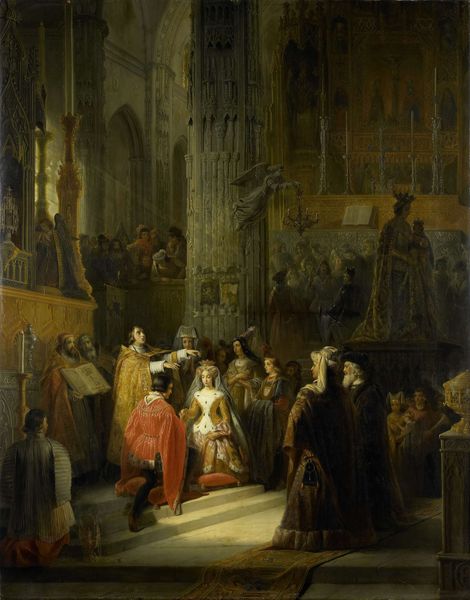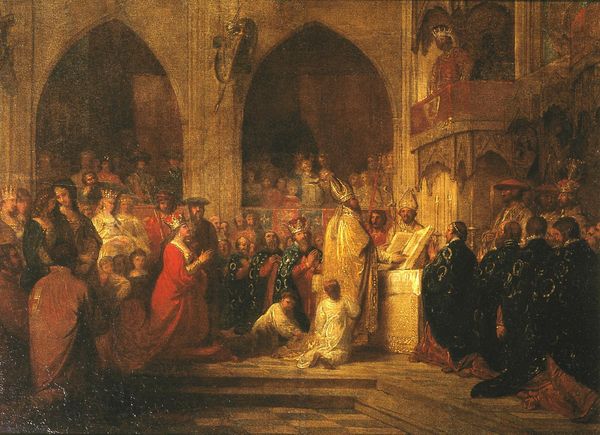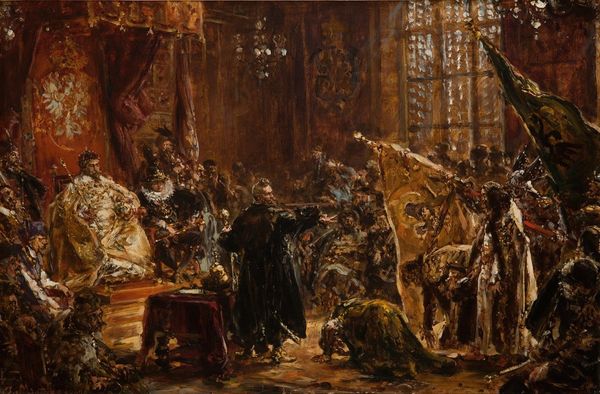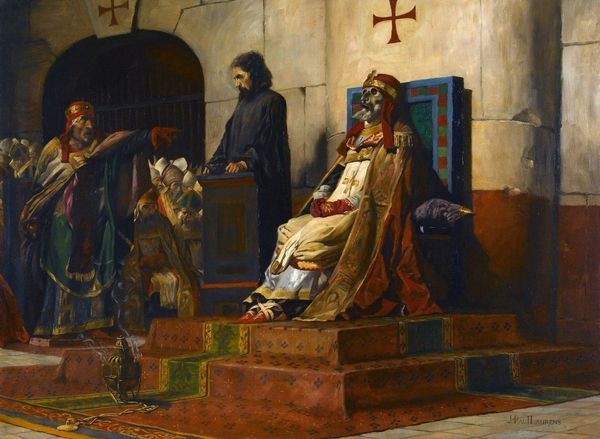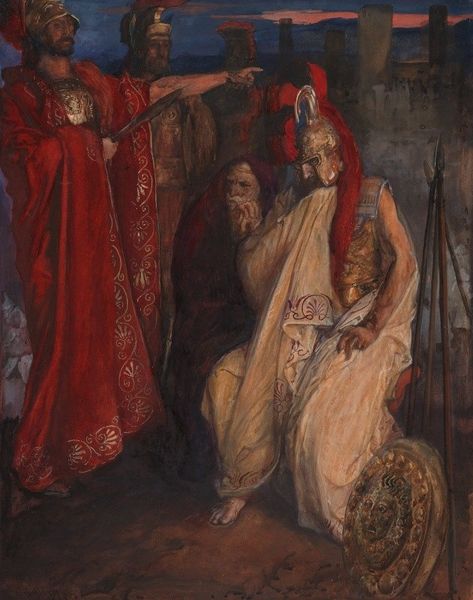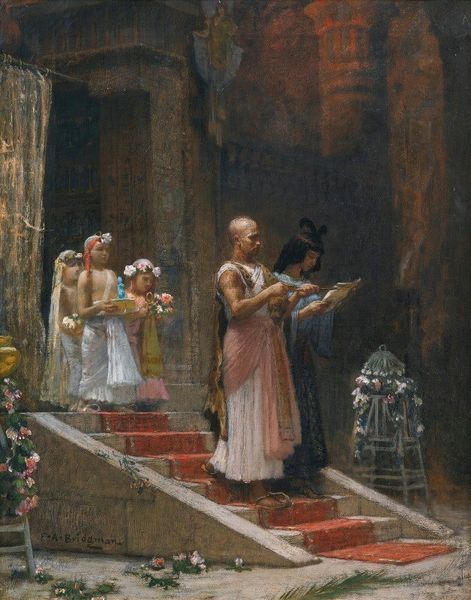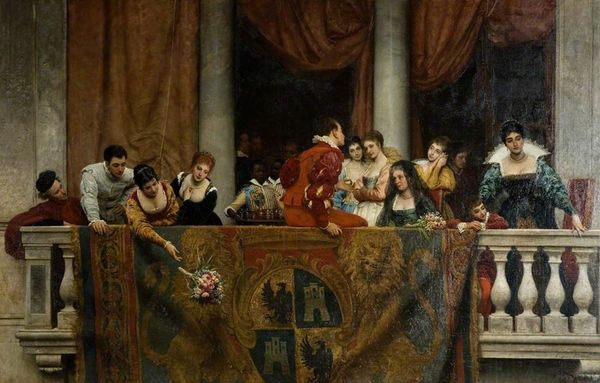
Copyright: Public domain
Editor: So, this is Mikhail Nesterov's "Michael's Vocation to the Realm," painted in 1885, using oil paints. It feels really somber and staged to me, almost theatrical. What's your take? What stands out to you? Curator: The theatricality is a great observation. I see this piece as a visual articulation of power, not just religious, but specifically tied to the construction of Russian identity in the late 19th century. Nesterov positions this young figure, presumably Michael, within a highly ritualized and hierarchical setting. The kneeling figures, the ornate garments, they all speak to a complex negotiation of faith, nation, and autocracy. Editor: Negotiation, how so? Curator: Consider the timing. The late 19th century in Russia was a period of intense social and political upheaval. The old ways were being challenged, revolutionary ideas were gaining traction. Nesterov seems to be reasserting a vision of divinely ordained authority as an anchor against that instability, appealing to deep-seated beliefs about the Tsar's sacred role. What message does this send, and to whom? Is it a painting for the people, or for the ruling elite? Editor: It’s interesting to think about it as a political statement cloaked in religious imagery. I was only focusing on the faces, they look a bit sad. I didn’t think about the broader historical moment. Curator: And that’s precisely why it's crucial to look beyond the immediate aesthetic. By situating it within the social and political context of the time, it enables us to really dig deeper, challenging assumptions and provoking conversations that speak to today's world. How do ideas about divine rule impact the struggles for freedom, autonomy, self-determination? Editor: Wow, okay. It’s like, the painting isn’t just about the past, it’s also about now. It makes me consider how easily narratives of authority can be constructed and then accepted. Curator: Exactly. It calls us to ask who benefits from those narratives, and who is silenced or marginalized by them.
Comments
No comments
Be the first to comment and join the conversation on the ultimate creative platform.
